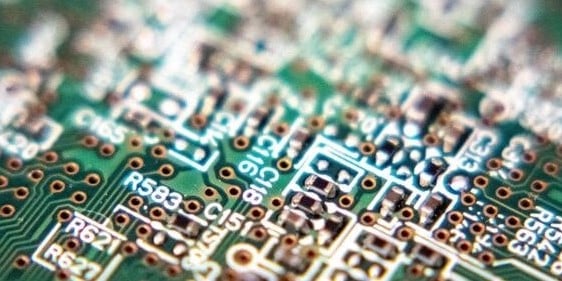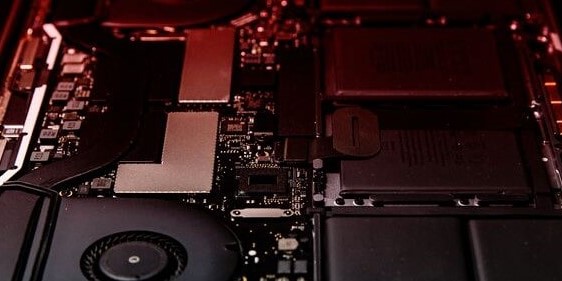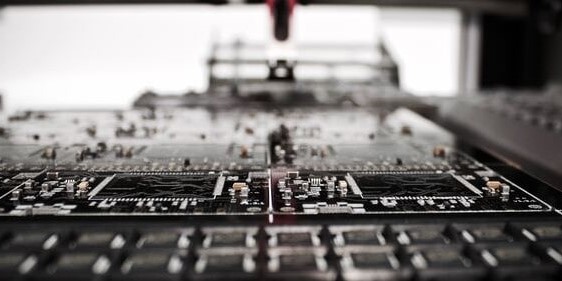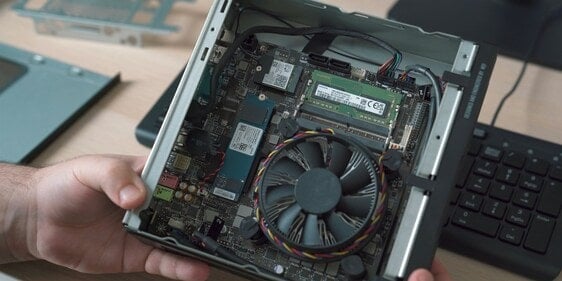Printed circuit board assembly is a vital part of any modern electronic device and box build. From smartphones to spacecraft, they all contain PCBAs.
PCBAs are crucial for electronic devices. They mechanically support and electrically connect the components, making it possible for the box build or device to function as intended.
In this article, you will learn all about the aspects of PCBA including the different parts, the assembly process, and the challenges of PCBA.
What is the difference between a PCBA and a PCB?
Although some use the two terms interchangeably, there is a difference.
A PCB is a blank circuitry. This means that it is not yet functional. In the assembly process, all the needed electronic components are then put in place, soldered etc. which leads to a functioning PCBA.
In short: The PCBA is built from the PCB.
The parts of a PCB
Before getting into the assembly process, it is essential to understand the key parts of a typical PCB, including a substrate, PCB traces, and electric components.
The substrate
The base of a PCB is made of a non-conductive material (or it is isolated). The material will typically be fibreglass and epoxy resin. These materials can be supported by ceramics, which increases the dielectric constant of the PCB. The materials of the substrate determine the mechanical, thermal, and chemical properties of the PCB.
PCB traces
When the substrate is finished traces will be added. These traces act as paths for signals, data, and power between components. The PCB traces are mostly made of copper foil that is laminated onto the substrate.
Electronic components
The PCBs contain a collection of different electric components. These are vital for the electric device to function as intended. Amongst the most common components are resistors, transistors, capacitors, inductors, transformers, diodes, and sensors.
PCBA process
PCB assembly involves several intricate steps. All steps are crucial for the PCB because of the complexity of the process. The PCBA includes design, fabrication, assembly, testing, and quality control.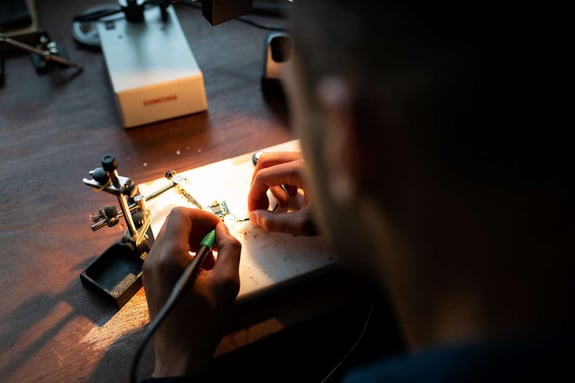
Design
This step is where you put your ideas on paper. Blueprints are drawn, schematics are developed, and design rules are defined. This first step lays the foundation for the rest of the manufacturing and assembly process and is therefore decisive for the PCBA.
Fabrication
After the designing process, it is time to fabricate. This means transcribing the digital board design onto the physical structures. The fabrication process involves a series of steps that need to be carefully coordinated and realised.
PCB assembly
The PCBA is the step where the electronic components are put onto the PCBs, making it function. In the assembly process, you have two main methods you can use: Surface Mount Technology (SMT) and Through-Hole Technology (THT).
Test and quality control
As well as the three previous steps, test and quality control are essential for a well-functioning PCBA that fulfils all demands and needs. That is why all processes and materials must be checked both before, during, and after the assembly.
What influences the price of PCBs and PCBAs
The cost of PCBs is determined by various factors. Some you can control by making design changes and some are determined by the expected quality.
Here are 14 factors that influence the price:
Manufacturing volume
Board thickness, size, and shape
Count of layers
Materials
Space between traces
Finishes and coatings
Hole sizes and amount
Tolerances
Testing requirements
Overall quality
Lead time
Manufacturer’s capability and reputation
Method of production – automated or manual
Location of manufacturing
Challenges in PCB assembly
PCBA is in many ways a complicated process, setting high demands for the assembly suppliers and their services.
Firstly, electronic devices continue to shrink in size. This means that the PCBAs must be smaller and more densely packed. To meet these requirements extreme precision is needed. Microscopes are being used in many of the assembly processes, for example, when soldering the small components to the PCB.
Picking out and managing suppliers is a difficult practice as well. You must find trustworthy suppliers for PCBs and other materials to make sure that the PCBA holds up to your standards.
This leads us to the quality control. This part is intricate and can be the cause of many headaches. Because of the complexity of a PCB assembly, quality control is vital.
The intricacy of PCBAs means that most companies outsource the production to electronic manufacturing services.
PCBAs: vital parts of modern devices
All electronic devices and box builds contain and depend on PCBAs. That is why the PCB assembly is so important for a well-functioning product.
As demands for electronic products are getting higher, and the devices are getting smaller, PCBA is becoming an even more complicated process. This sets high requirements for suppliers as well as the supply chain management. All parts of the manufacturing process need to work together, from design to quality control.

